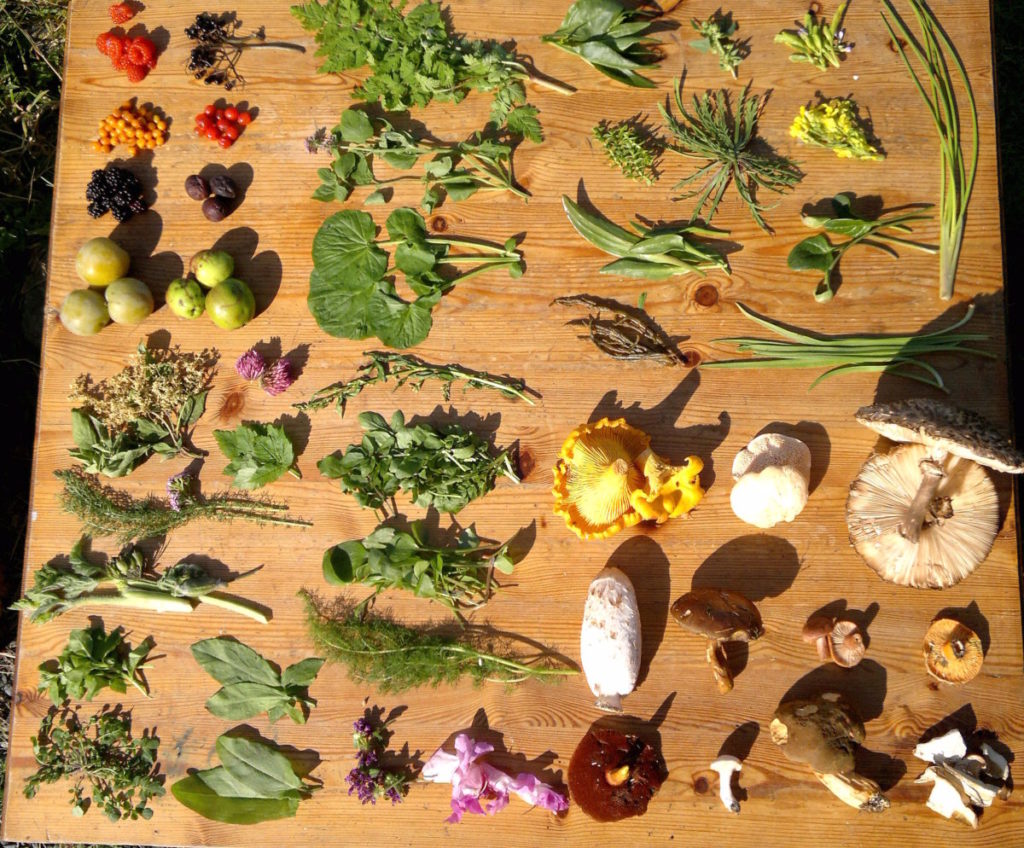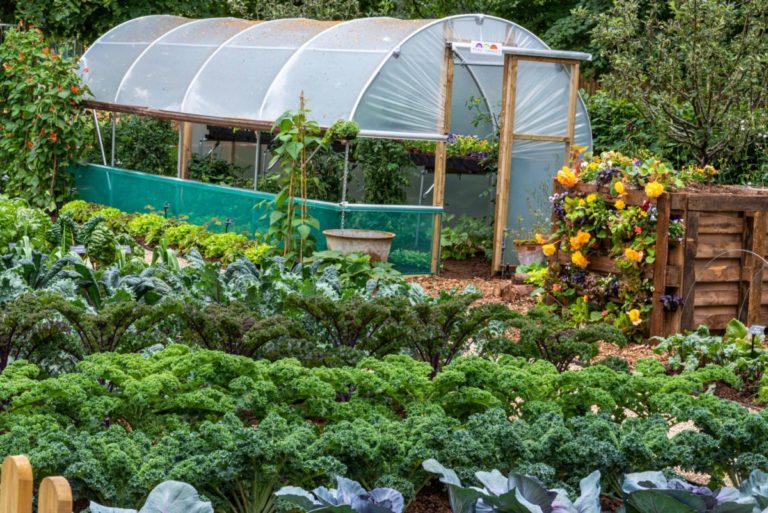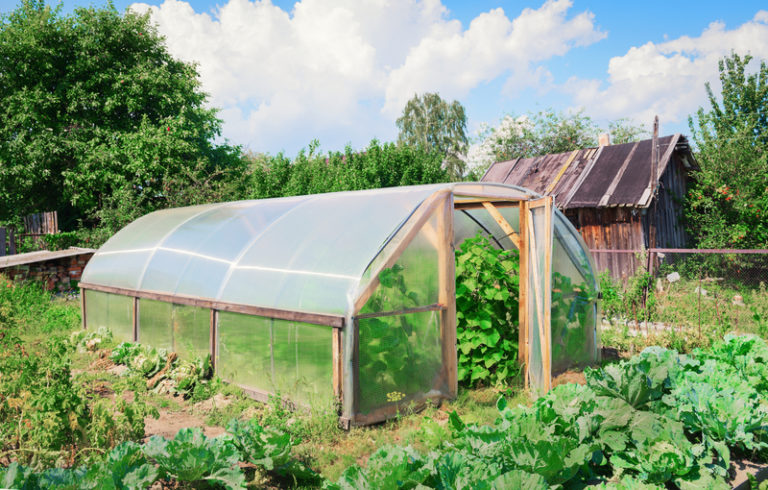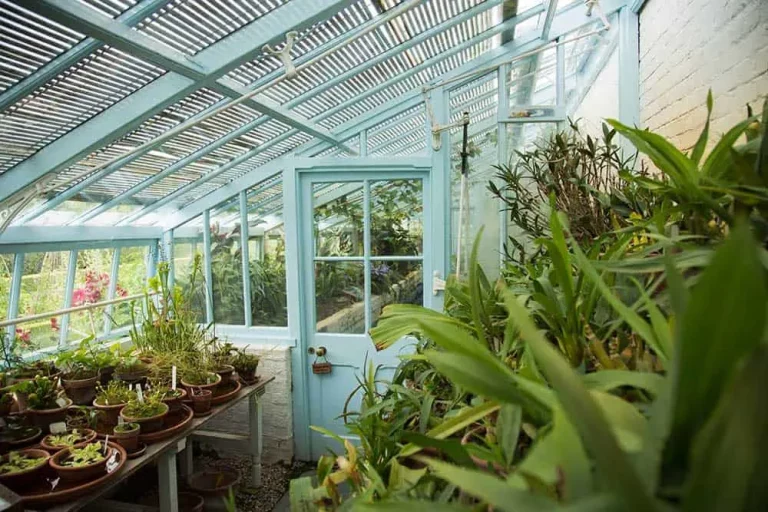Unlock the secrets of nature’s pantry with this comprehensive guide to wild edibles.
As a beginner, you’ll discover the essentials of foraging and learn how to identify, harvest, and prepare delicious and nutritious wild plants.
Whether you’re venturing into the forest, exploring meadows, or strolling through urban spaces, this guide will empower you to find a bounty of free, wild foods that are waiting for you.
Know your edibles
Before you start foraging, it’s essential to know which plants are safe to eat and which ones to avoid. Research the most common wild edibles in your area and learn to identify them correctly.
Research the most common wild edibles in your area and learn to identify them correctly.
Begin by familiarizing yourself with the local flora, as certain plants may be toxic or cause allergic reactions.
For example, certain species of mushrooms can be deadly if ingested, while others like chanterelles and oyster mushrooms are safe to eat and delicious.
Likewise, plants like hemlock and nightshade can be toxic, while wild greens like dandelion, chicory, and plantain are nutritious and safe to consume.
Proper identification is key, as even similar-looking plants can have different properties.
Practice using a field guide or a reliable app to identify plants, and never eat a plant unless you are absolutely certain it is safe.
Be aware of the environment and avoid foraging in areas with heavy pollution, pesticides, or other contaminants.
Remember to always start with small quantities and monitor your body’s reaction before consuming larger portions.
Some plants can cause digestive issues or allergic reactions, so it’s essential to be mindful of your body’s tolerance.
By taking the time to research and correctly identify wild edibles, you can enjoy a bounty of delicious and nutritious foraged foods while minimizing the risk of adverse effects.
Look for the right environment
Many wild edibles grow in specific environments, such as woods, fields, or wetlands. Knowing where to look can save you time and energy.
Wild edibles can be found in a variety of environments, each with its unique characteristics and challenges.
For example, woods offer a rich bounty of edibles like wild mushrooms, berries, and herbs, but the dense foliage can make it difficult to navigate and spot the most elusive species.
Fields and meadows, on the other hand, provide an abundance of grasses, grains, and vegetables, but may require careful observation to distinguish between the edible and non-edible plants.
Wetlands, with their marshy terrain and diverse aquatic life, offer a wealth of edibles like cattails, waterlilies, and algae, but may require specialized gear and techniques to collect them safely and sustainably.
Knowing where to look for these wild edibles can save you time and energy, as you can focus your efforts on the most likely locations and avoid searching unnecessary areas.
Understanding the specific growing conditions and habitat requirements for each edible can help you identify them more easily and avoid mistakes that could be costly or even dangerous.
Pay attention to seasons
Different wild edibles are available during different seasons. Knowing the seasonal patterns of your area’s wild plants can ensure you have a continuous supply of food.
Absolutely!
During the spring season, you can find a bounty of wild edibles like dandelion greens, wild onions, and violets.
These plants are at their peak flavor and nutritional value during this time, and can be found in abundance in fields, meadows, and along hiking trails.
As the weather warms up, you can also start foraging for delicious springtime mushrooms like oyster mushrooms and morels.
In the summer, the foraging landscape shifts to include a variety of juicy fruits like wild blueberries, raspberries, and blackberries.
These sweet treats can be found in forests, meadows, and even in your own backyard.
Keep an eye out for wildflowers like clover and dandelion, which are perfect for making herbal teas and tinctures.
And don’t forget to snack on succulent summer mushrooms like chanterelles and golden chanterelles.
As the days start to cool down in the fall, a new array of wild edibles becomes available.
This is the time to forage for hardy mushrooms like chanterelles, porcini, and lobster mushrooms.
The fall season is also an excellent time to find wild greens like cabbage, kale, and dandelion, which can be used in soups, salads, and sautéed dishes.
Keep an eye out for beautiful fall wildflowers like asters and goldenrod, which make wonderful additions to herbal teas and potpourri blends.
In the winter, you can forage for a variety of roots and tubers like burdock, sunchokes, and dandelion, which can be roasted, mashed, or used in soups and stews.
Winter wild edibles like bittercress, chickweed, and plantain can also be found and used in herbal teas and remedies.
Don’t forget to check your area’s regulations before foraging, as some areas may have specific rules and restrictions.] Many people believe that wild edibles are only available during specific seasons, but this is a misconception.
The truth is that different wild edibles are available during different seasons, and knowing the seasonal patterns of your area’s wild plants can ensure you have a continuous supply of food.
In the spring, wild greens like dandelion, chicory, and plantain are abundant and perfect for making herbal teas and tinctures.
And don’t forget to snack on succulent summer mushrooms like chanterelles and golden chanterelles.
As the days start to get shorter and cooler, winter wild edibles like bittercress, chickweed, and plantain come into season, making them perfect for herbal remedies and hearty stews.
While knowing which wild edibles are available during each season is important, it’s also important to be aware of any regulations or restrictions in your area before foraging.
Some areas may have specific rules regarding the collection of wild plants, so be sure to check local regulations before you start foraging.
By understanding the seasonal patterns of your area’s wild plants and knowing which ones are safe to eat, you can enjoy a constant supply of free, nutritious food all year round.
Learn about plant family patterns
Many wild edibles belong to specific plant families, such as the carrot family or the bean family. Recognizing these patterns can help you identify plants more easily.
When foraging for wild edibles, recognizing patterns within specific plant families can greatly aid in identification.
For example, plants within the carrot family (Apiaceae) often feature thin, hollow stems and divided leaves.
These plants may also have small, white or pink flowers and produce fruits that resemble tiny seeds or bolls.
Recognizing this pattern can help you identify wild carrots (Daucus carota), wild parsnips (Pastinaca sativa), and other edible Apiaceae members.
Similarly, the bean family (Fabaceae) includes plants with compound leaves and long, slender pods.
These plants may bear distinctive white or pink flowers and produce edible beans, peas, or lentils.
Noticing the characteristic pattern of leaves and pods can help you identify wild bean species like the American bean (Vigna unguiculata) and the European bean (Vicia faba).
By recognizing these patterns within specific plant families, you can more easily identify wild edibles and add variety and nutrition to your diet.
With practice and experience, you can learn to recognize these patterns and enjoy the bounty of nature’s grocery store!
Use multiple identification methods
Always use multiple methods to identify a wild plant, such as examining its shape, size, color, and texture. Compare your findings with pictures or descriptions to ensure accuracy.
When foraging for wild plants, it’s important to employ multiple identification methods to ensure accuracy and avoid mistaking toxic lookalikes for edible plants.
Start by observing the plant’s shape, size, color, and texture.
Notice any distinctive features, such as leaf shape, stem thickness, or flower color.
Compare your findings with pictures or descriptions in a reliable field guide or online resource.
Use multiple sources to cross-check your identification, as some plants can have varying characteristics depending on the region, season, or individual plant.
Remember, a single characteristic can’t confirm the identity of a plant, so always look for multiple indicators before consuming any wild plant.
Be aware of any lookalike species that may be toxic or otherwise harmful, and avoid plants that show any signs of disease or pest infestation.
By taking a thorough and cautious approach, you can ensure a safe and successful foraging experience.
Be cautious of lookalikes
Some wild plants can be mistaken for non-edible lookalikes, so it’s essential to be cautious and not consume anything you’re not absolutely sure is safe.
When foraging for wild plants, it’s essential to be cautious and not consume anything you’re not absolutely sure is safe.
Some wild plants can be mistaken for non-edible lookalikes, and consuming the wrong plant can be harmful or even fatal.
For example, the poisonous plant, Deadly Nightshade, resembles edible plants like Solanum, and can be difficult to distinguish without proper knowledge and experience.
The symptoms of poisoning can take hours or even days to manifest, making it important to be aware of the risks and take necessary precautions.
To avoid any confusion or mistakes, it’s best to consult with an experienced forager or a trusted field guide before consuming any wild plants.
Always properly identify any plant before consumption, using multiple sources to ensure accuracy.
It’s better to be safe than sorry, and proper identification is essential to avoid any potential harm.
Use appropriate preparation methods
Once you’ve identified your wild edibles, use appropriate preparation methods to make them safe and palatable. Boiling, steaming, or drying are often recommended.
To ensure the safety and palatability of your wild edibles, it’s essential to use appropriate preparation methods once you’ve identified them.
Boiling, steaming, and drying are among the most recommended methods for preparing wild edibles.
Boiling is an effective way to kill off any harmful bacteria or viruses that may be present on the plants, while steaming helps retain the plants’ nutrients and flavor.
Drying is also a great way to preserve wild edibles, as it eliminates the risk of spoilage and allows you to enjoy them for an extended period.
Whichever method you choose, make sure to follow proper food safety guidelines to ensure the wild edibles are safe to consume.
For example, always wash your hands before handling the plants, and avoid consuming any plants that are past their expiration date or show signs of mold or rot.
Harvest responsibly
Always harvest responsibly and sustainably, ensuring you leave enough plants to allow the ecosystem to thrive. Never over-harvest or damage the environment in the process.
When it comes to harvesting plants, it is essential to prioritize responsible and sustainable practices.
This means carefully selecting the right plants, only harvesting what is necessary, and leaving enough behind to ensure the long-term health of the ecosystem.
This approach not only preserves the integrity of the environment but also helps to maintain biodiversity and promote the growth of other plants and organisms.
To achieve sustainable harvesting, it is important to take the time to properly identify the plants you wish to harvest, as well as their growth patterns and optimal harvesting times.
This will help you avoid over-harvesting and ensure that you are only taking what is needed, rather than depleting the environment of its resources.
It is essential to harvest plants in a way that minimizes damage to the environment.
This may involve using gentle techniques, such as hand-harvesting or using specialized tools, to avoid damaging the plants or the soil around them.
By taking a thoughtful and intentional approach to harvesting, you can help to maintain the delicate balance of the ecosystem and ensure its continued health and vitality.
Want More? Dive Deeper Here!
Hey there! If you’re the type who loves going down the rabbit hole of information (like we do), you’re in the right spot. We’ve pulled together some cool reads and resources that dive a bit deeper into the stuff we chat about on our site. Whether you’re just killing time or super into the topic, these picks might just be what you’re looking for. Happy reading!






